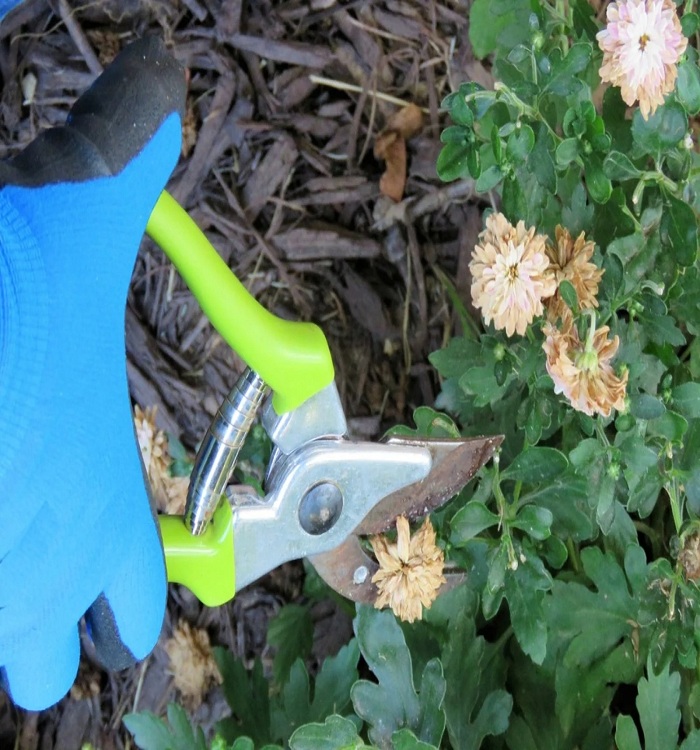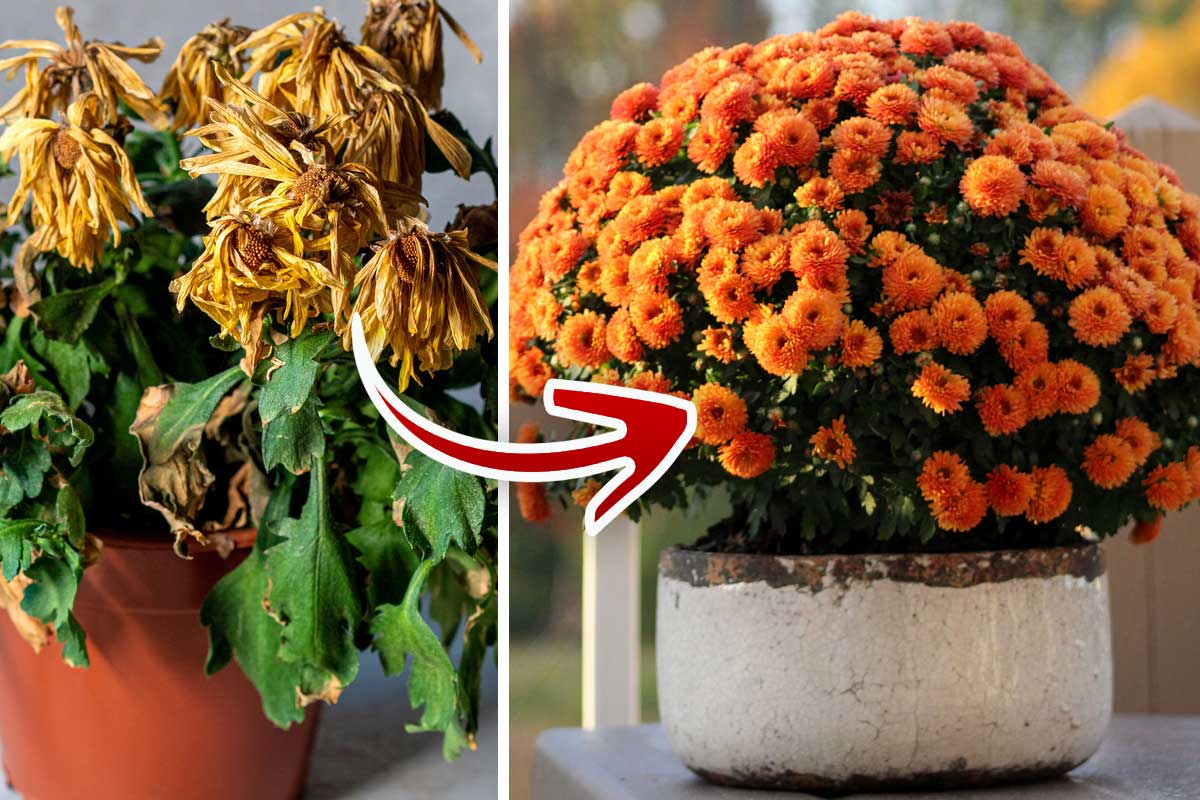If you want to decorate your home for autumn, mums are the way to go. But wow, what a hefty price tag! Especially when you consider how many mums are thrown away each year after their blooms have died from the cold.
However, that’s not how things have to be! Almost all of the mums available for purchase are sturdy perennials. With very little care, they may be planted in your landscape for a full year of growth, or use them to grow in pots and containers again next year for even bigger and greater fall displays.
With that in mind, here are some simple tips to conserving your fading mums this fall for next year!
How to Save Mums?
Making sure you’re working with the proper mum variety is the most crucial step in the process of saving them. For autumnal arrangements, you can choose between garden mums and flower mums. And they absolutely differ in terms of toughness.
Saving garden mums is possible. They may be kept alive and growing year after year with some fall maintenance. These mums are worth buying and preserving since they can be grown successfully in hardiness zones 5 through 9.
However, flowering mums aren’t at all winter hardy and should be avoided. They won’t return no matter how much you care about them. Their thin, delicate root systems cannot tolerate freezing temperatures. Any exposure to frost or cold temperatures will result in their swift demise.
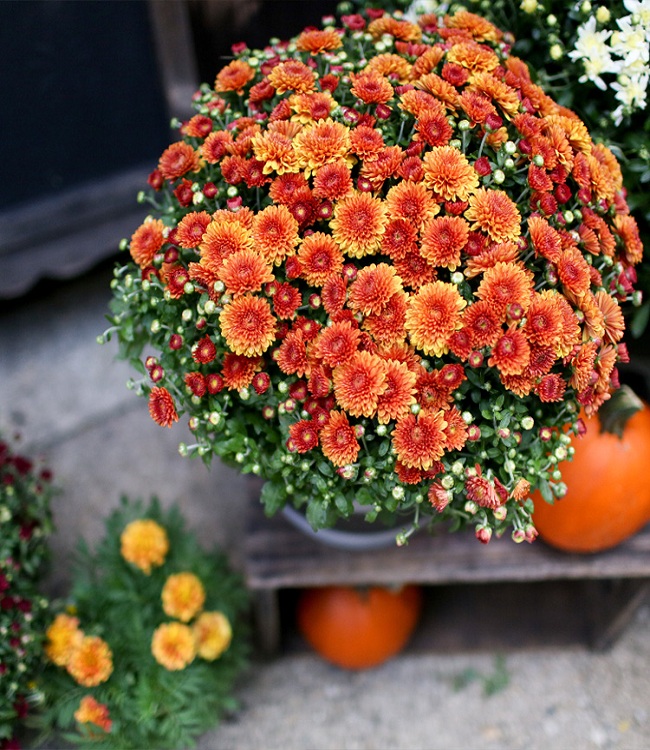
How do you figure out what kind of mum you have?
Mums are offered with labels that indicate whether or not they are hardy mums. There are a few methods you can use to determine the species of a plant even if it does not have a label.
Miniature or dwarf mums are typically flower variants, and they prefer to be grown in shallow containers. The stems, leaf clusters, and flowers of ornamental mums are often significantly smaller than those of their hardy counterparts. Once the blooms on your mums have faded, it’s time to toss them in the compost bin.
Mums grown in larger containers are more likely to be long-lived, resilient garden mums. Although it’s not an exact science, a good rule of thumb is that if your mums are in pots that are at least 6 inches in diameter and 4 to 6 inches deep, and if they have huge blooms and leaf sets, they are likely hardy mums. That, of course, means you can save them.
The good news is that the majority of the mums that are sold in stores each autumn tend to be hardy mums. Due to their larger size and more bloom power, they are more appealing to consumers.
How to Save Hardy Garden Mums for the Following Season?
Let’s look at some simple ways to preserve hardy garden mums! Your mums’ present growth stage will determine which overwintering strategy is appropriate for them. The most common choice is to start with mums in pots.
Saving Potted Mums
The first rule of thumb for saving mums in containers is to ensure they are never subjected to freezing temperatures. Any time there’s a chance of a freeze or other conditions that could cause severe damage to your mums, you should bring them inside immediately. Mums may withstand small frosts and cold, but a harsh freeze can and typically will damage roots in pots permanently.
If you see that the blooms on your mums are starting to wilt, or if the weather suddenly turns chilly in late autumn, it is time to bring your plants inside for the winter. When fall arrives, it’s time to bring the potted mums inside so they can survive their first winter.
Mums can be planted straight into the ground in late summer or early fall, but doing so too late in the season usually leads to their failure.
Mums that are replanted in the ground in late autumn stand a very little chance of survival. They can’t get a strong enough root system established in the soil to survive without intensive mulching. Their roots just freeze and die when this happens.
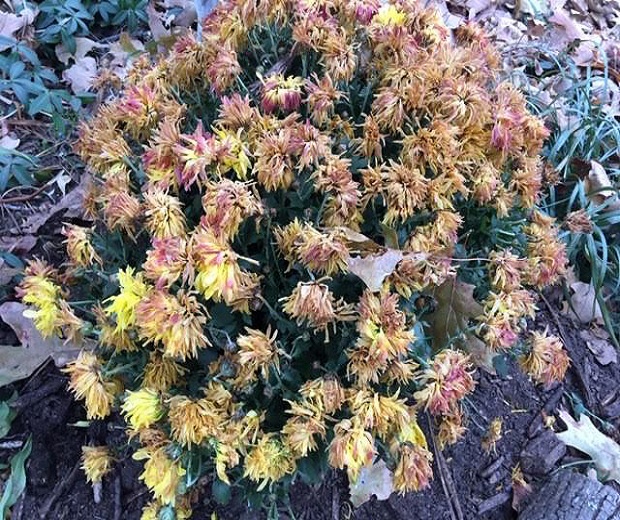
Bringing Mums Indoors
Before taking your mums inside, there are a few basic things you need to do. To begin, use a sharp knife and trim the mum back to just above the soil level in the container. This will primarily remove the stems and a few little leaves, but it will be OK!
Plants need to be watered only when the soil is dry to the touch; heavy watering can kill them. Root rot can occur if a plant receives too much water during the winter. Next, put them in an unheated or insulated garage, a semi-heated basement, or a chilly area of the basement.
The idea is to keep the plant dormant without freezing it. It can be kept dormant but alive at temperatures between 45 and 60 degrees. Winter requires occasional, light watering, but more often than once per several weeks. Again, be careful not to overwater the soil.

Planted Mums
You can leave mums that you have in the landscape or those you planted in the early fall for a display outside all winter. Mums will likely have set roots if they have been in the ground for four to six weeks before the first frost.
For mums that will stay in the landscape, its leaves should be kept in place. The mums benefit from the added insulation provided by the remaining leaves and stems throughout the cold season. Leave the plant’s leaves on, and then put a thick layer of mulch (about 4 inches) over it to protect the plant’s roots from the cold.
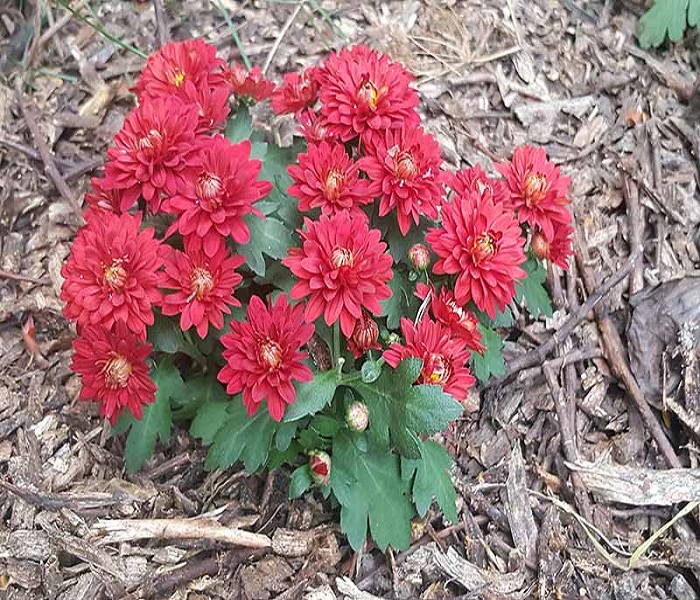
How to Care for Potted Mums in the Spring?
In the early spring, you should begin preparing your mums for their return to outside life. Mums can be easily maintained by planting them in the ground outside. Mums are a type of perennial plant that looks great in flowerbeds from early spring through early summer. However, as you’ll see in the following section, you can repot them as well.
They can be planted outside in the ground like any other perennial once the danger of frost has passed. This is also the best time of year to develop new plants from overgrown mums. To replant, just divide into portions using a sharp knife or spade.
For the first several weeks, water regularly to help plants become established in the soil. Replanting mums in flowerbeds is far more likely to succeed if the soil is amended with compost since they thrive in soil that is rich, fertile, and well-drained.
Repotting Mums In The Spring
Mums need to be re-potted with fresh potting soil every time you want to grow them in a container or pot again. This provides enough of nutrition for the upcoming season. The plants will have a tough time recovering if left in the same soil.
If the plant’s roots have outgrown its current container, you can either transplant it to a larger pot or split and divide it to give the roots more area to expand. Wait until the danger of frost has gone before dividing and transplanting your container or basket plants.
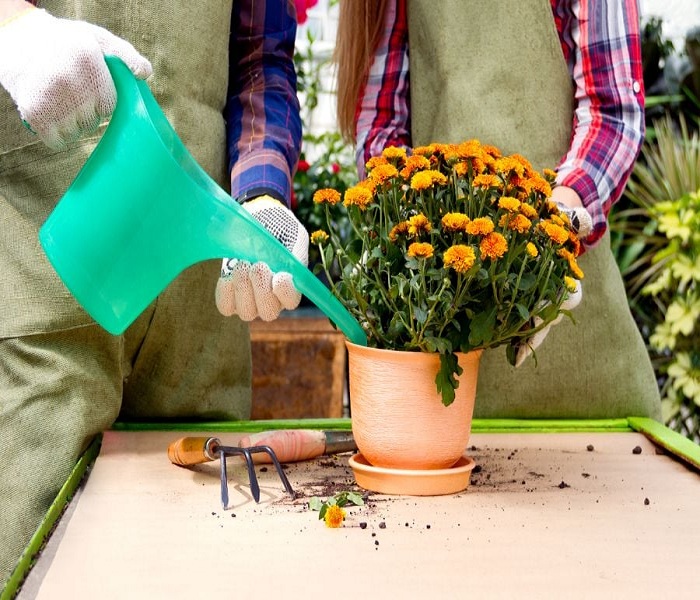
Summer Care
If you want your plants to bloom in the fall while growing them outside for the entire season (April through fall), you should prune them in the middle of summer. If left alone, mums will bloom in the late summer, but if you cut them back in late June or early July, you’ll get stronger, tighter flowers as well as blossoms in the fall.
To achieve this, during the middle of summer, pinch or remove the flowers. This will give the plant plenty of time to establish denser foliage and new flower clusters. The flowering is postponed until the fall, when most gardeners prefer their mums to blossom for a fall show.
Overwintering is not a problem for mums that have grown for a whole season outdoors. If you want to transplant them into containers, though, you’ll have to bring them inside and overwinter them again until April.
